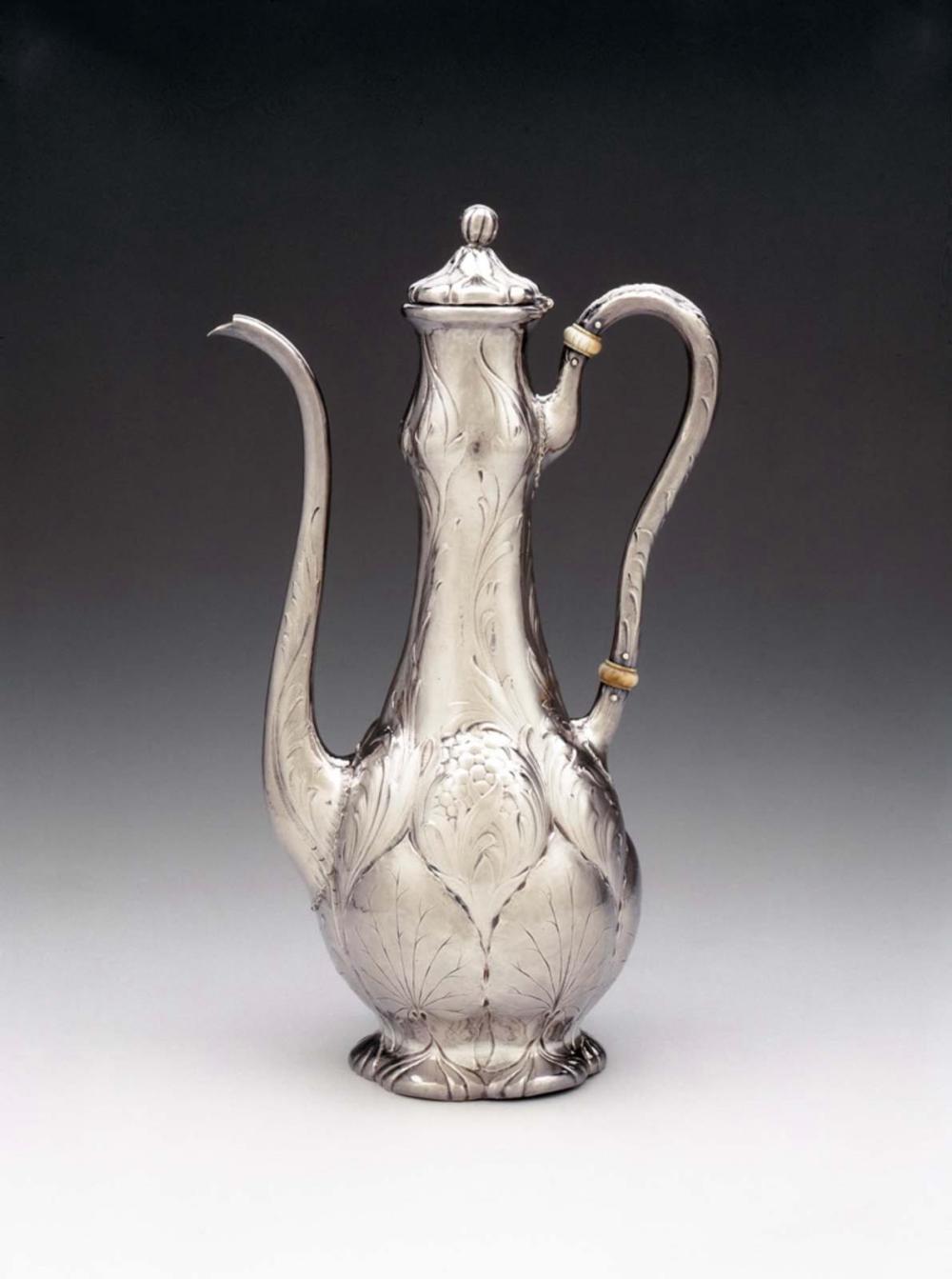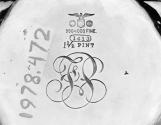Advanced Search
Coffeepot (or ewer)
Gorham Manufacturing Company (active 1865–1961)
1898
Object Place: Providence, Rhode Island, United States
Medium/Technique
Silver; ivory insulators
Dimensions
Overall: 29.2 x 16.5 cm, 0.74 kg (11 1/2 x 6 1/2 in., 1.63 lb.)
Other: 8.7 cm (3 7/16 in., 743.9 gm)
Other: 8.7 cm (3 7/16 in., 743.9 gm)
Credit Line
Mary L. Smith Fund
Accession Number1978.472
CollectionsAmericas
ClassificationsSilver hollowware
The decoration of this coffeepot displays sensuous floral motifs, anticipating the spread of the Art Nouveau style in America, whereas the form illustrates the fashion for Islamic-inspired wares in the last quarter of the nineteenth century. By this period, Gorham had fully mechanized its methods and developed one of the most efficient and modern factories of its type. Yet, the firm repeatedly introduced handcrafted elements into its products and, in 1897, launched a line of silver made entirely by hand. These wares, characterized by their Art Nouveau style, were called Martelé, the French word for hand hammered.
Gorham’s goal in producing the Martelé line was to reunite the designer and the craftsman, an idea in harmony with the philosophical outlook of the Arts and Crafts movement. Gorham’s chief designer was English-trained silversmith William Christmas Codman (1839 – 1921), who directed this initiative. In preparation for the introduction of the Martelé line, Gorham provided instruction to its craftsmen in hand-raising hollowware from flat sheets of silver. Between 1897 and 1912, the company produced approximately 4,800 pieces of Martelé. The date mark for 1898 on this object suggests that it was among the earliest produced; the company typically did not mark these hand-wrought pieces with the word Martelé until 1901.
This text has been adapted from "Silver of the Americas, 1600-2000," edited by Jeannine Falino and Gerald W.R. Ward, published in 2008 by the MFA. Complete references can be found in that publication.
Gorham’s goal in producing the Martelé line was to reunite the designer and the craftsman, an idea in harmony with the philosophical outlook of the Arts and Crafts movement. Gorham’s chief designer was English-trained silversmith William Christmas Codman (1839 – 1921), who directed this initiative. In preparation for the introduction of the Martelé line, Gorham provided instruction to its craftsmen in hand-raising hollowware from flat sheets of silver. Between 1897 and 1912, the company produced approximately 4,800 pieces of Martelé. The date mark for 1898 on this object suggests that it was among the earliest produced; the company typically did not mark these hand-wrought pieces with the word Martelé until 1901.
This text has been adapted from "Silver of the Americas, 1600-2000," edited by Jeannine Falino and Gerald W.R. Ward, published in 2008 by the MFA. Complete references can be found in that publication.
DescriptionEmbellished with delicate repousséd and chased ornament of flowering vines, veined leaves, and budding flowers, this vessel has a footed, bulbous, raised body tapering to a narrow neck that flares slightly outward and then inward at the upper juncture of the handle. The spout and pinned handle are seamed; the latter has ivory insulators. The bottom is inset, and the hinged lid bears a knob finial.
Marks
Marks stamped on base: lion passant within a shaped cartouche; anchor with a shaped cartouche surmounted by a spread-winged eagle; the gothic letter "G" within a hexagon/ 950-1000 FINE./ 1413 in a rounded rectangle/ 1 1/2 PINT
Off center of base: conjoined 3 arrows (year mark for 1898)
Off center of base: conjoined 3 arrows (year mark for 1898)
Inscriptions"FS" engraved in script on base
Provenance1978, purchased from Fred Silberman, 1122 Madison Ave, New York, NY 10028



